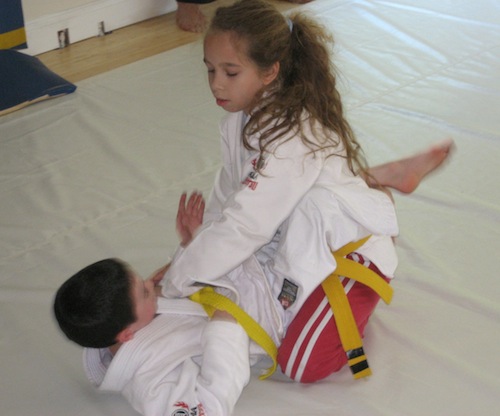Game Theory; How I Learned to Teach BJJ to Kids,
A Guest article by John Connors and Jon Grayzel
Some of you may remember the birthday scene from the Steve Martin movie “Parenthood.” Steve Martin’s character, an extremely anxious but well-meaning father, has hired a birthday clown for his 9 year old son’s party. Unbeknownst to the father, the clown has a drinking problem and decides that the afternoon of the son’s party, to which the boy has invited all his neighborhood friends, would be the perfect time for a bender.
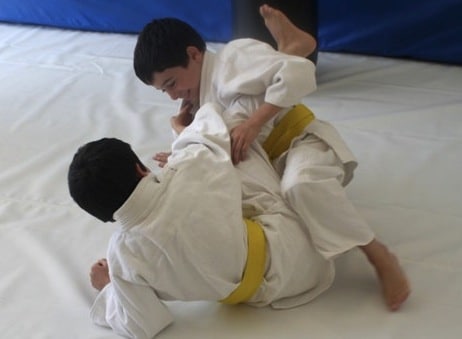
Having tried desperately to revive the clown without success, the father decides the only way to salvage his son’s party is to stand in for the clown. The father pulls out all the stops: he tries performing stunts while riding a horse but is bucked through a window (to the delight of the kids), he juggles dangerous objects, nearly incurring life-threatening injuries, and then he tries to make animal balloons, but his poodles look like extras from Star Wars. Despite this series of failures, he is not deterred in his efforts to entertain the kids.
When I opened my first jiu jitsu school several years ago, I decided to offer a children’s class.
Most martial arts industry consultants and experts advise instructors to make kids’ classes fun, entertaining, and full of games. Lots of games. Some of these experts offer video series that describe how to use games to teach the skills and cultivate the attributes needed for Brazilian jiu jitsu and other grappling arts. Armed with these concepts and a few other activities I played growing up, I put together some teaching schemes for my children’s classes.
The schemes included basic instruction on takedowns and positions, and lots of games. There was British bulldog and minnows ‘n sharks, which involved variations on kids darting across the ground while others tried to pin them, bull ride, which involved kids trying to maintain rear mount while the “bull” tried to buck them off, jiu jitsu virus, in which the kids scooted around like crabs trying to capture and trip those not “infected,” and many others.
After a few months of teaching the kids jiu jitsu class this way, I began to feel like Steve Martin’s father character: I was the amateur clown desperately trying to keep the kids entertained by coming up with new games to play. I bounced around the class cheering the children on with artificial enthusiasm as they scooted and rolled and played.
After a few more months, I began to dread my kids’ classes. But why? Games are fun, aren’t they? Weren’t the kids having a good time and learning valuable grappling skills, almost without realizing it? Wasn’t this how children’s martial arts classes were supposed to be run? Nevertheless, I couldn’t escape the feeling that something was fundamentally wrong with what I was doing.
Gradually I came to believe that the emphasis on games had perverted the nature of the class. The games had created an atmosphere in which Brazilian jiu jitsu and my standing as an instructor of this incredible martial art were devalued. The kids saw me as a clown, not a coach, and their class as one more means of entertainment, like a computer game or Gymboree . After all, whether implicitly or explicitly, isn’t this what I had been telling them by devoting so much time to games?
. After all, whether implicitly or explicitly, isn’t this what I had been telling them by devoting so much time to games?
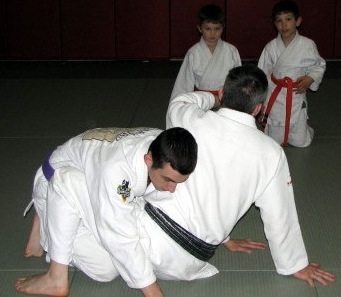 But grappling is not a game. Yes, it’s fun and exciting, but as any practitioner knows it is also hard and it demands disciplined effort if one is to make progress. Grappling involves physical discomfort and it is not for every child. But out of the effort and discipline and discomfort needed to learn jiu jitsu, children learn valuable lessons about such things as humility, self-control, and perseverance in the face of hardship. They don’t learn these things because they won a game or because an instructor gave them a new, brightly colored belt, but by dint of their own effort on the mat.
But grappling is not a game. Yes, it’s fun and exciting, but as any practitioner knows it is also hard and it demands disciplined effort if one is to make progress. Grappling involves physical discomfort and it is not for every child. But out of the effort and discipline and discomfort needed to learn jiu jitsu, children learn valuable lessons about such things as humility, self-control, and perseverance in the face of hardship. They don’t learn these things because they won a game or because an instructor gave them a new, brightly colored belt, but by dint of their own effort on the mat.
As these thoughts began to coalesce in my mind, I decided to change my approach: No more games. Instead the kids were going to do as much jiu jitsu as I could cram into a 45 minute class. I didn’t expect 7 and 8 year olds to learn like adults, and I didn’t plan to turn the kids class into Marine Corps training, but they were in my school to learn jiu jitsu and that was what they were going to do.
Now I run my children’s jiu jitsu classes much like my adult classes, albeit with less detailed explanations of technique. We begin class with a brief warm-up that includes basic jiu jitsu movements like shrimping. Then we work on learning techniques in the context of the repeating 12 week curriculum I have developed.
For both my kid and adult classes, I use the “Why? What? How? and What if?” format when presenting techniques.
The “Why?” section explains why they would want to learn this technique: what they will gain from knowing it and what they might lose if they don’t know it. This motivates students to want to learn what I’m about to show.
The “What?” section explains what the technique is: its name and perhaps some brief history or story that goes along with the technique. This provides context to help with learning.
The “How?” section provides the actual step-by-step explanation of the technique.
The “What If?” section is where students try the technique for themselves with their training partners against gradually increasing levels of resistance.
During the “How?” section, after demonstrating a new technique and presenting the steps a few times, I use Active Recall to reinforce the key movements. This method simply consists of asking individual students to describe the next step in a technique: “Dave, what do I do first?” “Joe, where do I place my right hand?” “Suzy, where do I move my hips?” When using this approach, I never put a student on the spot. If they struggle with the question, I quickly give hints or the actual answer.
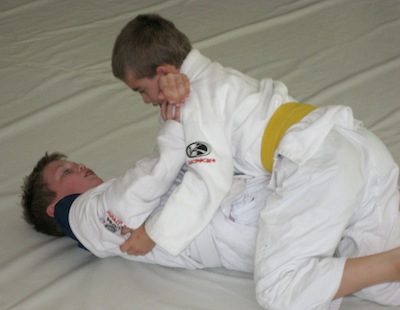
During the “How?” section, I also present (and then ask about) the one or two most common mistakes that people routinely make when trying to perform the new technique.
Once the steps are clear, the students practice the technique with one another, first with no resistance and then with light resistance.
Next, the students wrestle in the position we are practicing, using the new technique and others they have learned. When one partner gains a dominant position, they reset and begin again. This gives the kids (and adults) lots of experience with a particular position without confusing them with the overwhelming variety and detail that bjj can present.
Finally, we free grapple with different partners.
The change to this style of teaching has transformed my children’s classes and renewed my enthusiasm. I no longer feel like Steve Martin’s stand-in clown, trying desperately to entertain children, already saturated with sophisticated entertainment to which my meager games could never measure up. Instead, I feel like a jiu jitsu instructor. And for the kids who are interested, I have so much more to offer than games.
About the Authors: John Connors is a BJJ Black Belt and the owner and chief instructor at Connor’s Mixed Martial Arts in Norwood, MA; Jon Grayzel is an emergency physician, medical writer, and a BJJ purple belt under John Connors
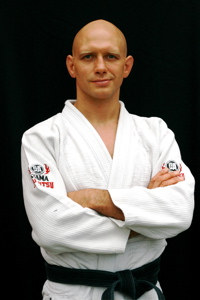 Stephan’s Notes and Additional Links: I really believe that grappling is a great art/sport/discipline for both the old and the young!!If you want to check out the other end of the spectrum, consider that Dan Inosanto, a martial arts legend and one of greatest inspirations, started BJJ in his sixties and achieved the rank of black belt!For more articles on this age and BJJ check out the Grapplearts Blog, maybe starting with the article on ‘Jiu-Jitsu for Seniors’ and another one called ‘Off to the Glue Factory.’ Stephan’s Notes and Additional Links: I really believe that grappling is a great art/sport/discipline for both the old and the young!!If you want to check out the other end of the spectrum, consider that Dan Inosanto, a martial arts legend and one of greatest inspirations, started BJJ in his sixties and achieved the rank of black belt!For more articles on this age and BJJ check out the Grapplearts Blog, maybe starting with the article on ‘Jiu-Jitsu for Seniors’ and another one called ‘Off to the Glue Factory.’
|
The post Teaching BJJ to Kids appeared first on Grapplearts.

